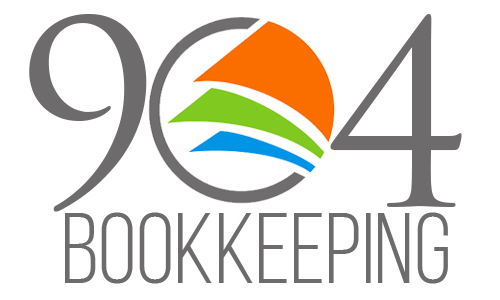Are you tired of sorting through piles of financial data and struggling to make sense of your QuickBooks? Maintaining accurate records is crucial for every business, but the process can be daunting. Fear not! In this blog post, we’ll show you how to clean up your QuickBooks in 2024 with our complete guide. By following these simple steps, you can streamline your accounting processes and keep tabs on your finances efficiently. So grab a cup of coffee and let’s dive into the world of cleaning up QuickBooks like a pro!
Overview of QuickBooks Clean Up Process in 2024
Assuming you are using QuickBooks Pro/Premier/Enterprise and have run the Clean Up Company Data tool:
- Go to File > Utilities.
- If you see the “C Condense Data” option, stop reading this and call us because you’re using an old version of QuickBooks that can’t be cleaned up and you’ll need to start from scratch with a new company file. Otherwise, proceed to step 3.
- Select “Clean Up Company Data.” If you’re prompted to backup your company file, do so.
- In the wizard that appears, select all the options EXCEPT “Delete unused list entries.” It’s very important that you do not delete unused list entries because doing so will delete any items, customers, vendors, etc., that have ever had a transaction associated with them, even if those transactions have since been deleted. We recommend only deleting unused list entries if absolutely necessary and if directed to do so by one of our support representatives.
- Once you’ve made your selections in the wizard, click OK and let QuickBooks do its thing. The process could take a while depending on how big your company file is and how many of each type of transaction you have (invoices, bills, checks, etc.).
- When QuickBooks is done cleaning up your company file, go to File > Exit to close QuickBooks entirely (you don’t need to log out)
Identifying and Removing Unused Accounts
To get started, open the QuickBooks Chart of Accounts. You can find this under the Company menu in the left navigation bar. Once you’re in the Chart of Accounts, take a look at all of the accounts that are listed. If there are any that you no longer use, simply click on them and then select “Delete” from the Actions menu.
One common reason that businesses end up with unused accounts is because they create an account for each individual customer or vendor. While this may seem like a good idea at first, it can quickly become unmanageable. If possible, it’s best to consolidate these into a single account for customers or vendors. This will make it much easier to track your finances and will save you time in the long run.
Once you’ve gone through your list of accounts and removed any that are no longer needed, be sure to save your changes. This will ensure that all future reports and financial statements reflect the updated information.
Reconciling Bank Accounts
Assuming you’ve already downloaded all of your transactions from your bank’s website into QuickBooks, it’s time to reconcile your account. This simply means matching the transactions in QuickBooks against those on your bank statement, and ensuring that they match up.
To reconcile an account in QuickBooks, go to the Banking menu and select Reconcile. Alternatively, you can reconcile an account by clicking on its name in the Accounts list.
In the Reconcile window, you’ll need to enter the ending balance and statement date from your bank statement. QuickBooks will then show you all of the transactions that have occurred since your last reconciliation.
Match each transaction on your bank statement with the corresponding transaction in QuickBooks. For each one, click the checkbox next to it so that QuickBooks knows you’ve accounted for it. When you’re finished matching up all of the transactions, click OK.
If any transactions are left unaccounted for, you’ll need to add them manually. To do this, click the Add Transaction button and enter the details of the missing transaction. Once you’ve added all missing transactions, click OK again to finish reconciling your account.
Closing Out Inactive Inventory Items
If you’ve been using QuickBooks for a while, chances are you have some inactive inventory items taking up space in your system. These are items that you no longer sell or use, and they can clutter up your books and make it difficult to find the active items you do sell. In this section, we’ll show you how to close out these inactive inventory items so they’re no longer a part of your system.
To close out an inactive inventory item, first go to the Lists menu and click on Inventory Items. Find the item you want to close out and click on it to open the Edit Item window. At the bottom of this window, there’s a checkbox labelled “Inactive.” Check this box and then click Save & Close.
That’s all there is to it! The item will now be considered inactive and will be removed from any future reports or transactions. If you ever need to reactivate the item, simply uncheck the Inactive box and click Save & Close again.
Deleting Duplicate Transactions
In order to clean up your QuickBooks file, you will need to delete any duplicate transactions. This can be done by going to the “Edit” menu and selecting “Find Duplicates”. Once you have found the duplicates, you can delete them by selecting the “Delete” option.
Optimizing Reports
If you’re like most QuickBooks users, you probably have a lot of reports. By taking some time to optimize your reports, you can make them more efficient and easier to use. Here are some tips for optimizing your reports:
- Use the report filters wisely. QuickBooks has a lot of different filters that you can use to customize your reports. Using the right filter can help you focus on the information that’s most important to you.
- Group your data. When you’re looking at a report, it can be helpful to group similar data together. This makes it easier to see patterns and trends.
- Use conditional formatting. QuickBooks allows you to format your data in different ways depending on certain conditions. For example, you could highlight all of the customers who owe money so that they’re easy to spot.
- Export your data. If you need to share your report with someone else, or if you want to save it for future reference, you can export it as a PDF or Excel file.
By taking some time to optimize your reports, you can make them more efficient and easier to use. This will save you time in the long run and help you get the most out of QuickBooks
Creating Customized Reports
In this section, we’ll show you how to create customized reports in QuickBooks. This will allow you to see exactly what transactions are impacting your bottom line and make changes accordingly.
To begin, open QuickBooks and go to the Reports menu. From here, you can select which type of report you’d like to generate. For our purposes, we’ll choose the Profit & Loss report.
Once you’ve selected your report, you can then customize it to include only the information that’s relevant to you. For example, you can choose to include or exclude certain types of transactions, set a date range, and more.
After you’ve customized your report, simply click the Generate Report button and QuickBooks will do the rest!
Tracking Inventory Items
In order to keep track of your inventory items, you should create a separate tracking account for each item in QuickBooks. This will allow you to see how much inventory you have on hand, as well as where it is located. You can also set up reorder points so that you can be notified when you need to order more inventory.
Refreshing Chart of Accounts
If your books are a mess, it may be time for a refresh. A good place to start is with your chart of accounts. This will help you get a better handle on where your money is going and where it’s coming from.
To refresh your chart of accounts:
- Go to the Company menu and select Chart of Accounts.
- Click the New button and select Refresh Existing Lists from the drop-down menu.
- Select the account you want to refresh and click OK.
- Click Yes to confirm that you want to refresh the account.
- Repeat steps 2-4 for each account you want to refresh.
Managing User Roles & Permissions
As a business owner, you are responsible for managing user roles and permissions. This can be done in the Settings area of QuickBooks. To do this, click on the Company Gear icon at the top right corner of your screen and select “Manage Users” from the drop-down menu.
On the Manage Users page, you will see a list of all the users who have access to your QuickBooks account. To edit a user’s role or permission, click on the pencil icon next to their name.
There are three different user roles in QuickBooks: Administrator, Standard User, and Limited User. The Administrator has full access to all areas of QuickBooks, while Standard and Limited Users have restricted access. You can learn more about each user role by clicking on the “?” icon next to the Role drop-down menu.
To change a user’s role, simply select the new role from the drop-down menu and click “Save.” If you need to further restrict a Standard or Limited User’s access, you can do so by editing their permissions. Permissions can be edited by clicking on the “Edit” button next to Permissions on the Edit User page.
On the Edit Permissions page, you will see a list of all the areas of QuickBooks that can be restricted for Standard and Limited Users. To restrict an area, simply check the box next to it. When you’re finished, click “Save.”
Finally, don’t forget to update your QuickBooks file with any changes that have happened during the year, such as new employees or changes in inventory levels. By taking care of these things now, you’ll be able to breathe a little easier come next April!
Need Help With Cleaning Your QuickBooks?
In conclusion, getting QuickBooks Clean in 2024 is an essential part of maintaining a successful and error-free financial management system. At 904 Bookkeeping, we have helped hundreds of businesses with their bookkeeping and Quickbooks clean up. Contact us Today!




